snow
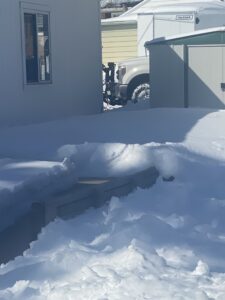
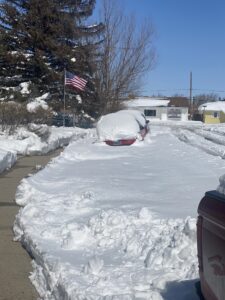 Normally, on this first day of Summer, I would be thinking about the days coming up, the precious few days when I finally get to feel the warmth that doesn’t come from being wrapped in a blanket or wearing a coat. Yes, Summer can be sweltering, and I can find myself wishing for a little cooler temperature, but I don’t want it to be much cooler. I am a summer person. I like heat. I like wearing shorts and sandals, rather than sweaters and coats.
Normally, on this first day of Summer, I would be thinking about the days coming up, the precious few days when I finally get to feel the warmth that doesn’t come from being wrapped in a blanket or wearing a coat. Yes, Summer can be sweltering, and I can find myself wishing for a little cooler temperature, but I don’t want it to be much cooler. I am a summer person. I like heat. I like wearing shorts and sandals, rather than sweaters and coats.
This year is a rather odd year…not that we haven’t had years of unusual weather…and no, I don’t buy into the whole global warming, climate change, or whatever they are calling it these days. Weather had natural patterns that have existed since time began, and this is nothing new. Nevertheless, when we have one of those years of an unusually cold Spring, and unusually harsh Winter, and somehow a fairly normal Fall, I find myself waiting for normalcy, impatiently!!
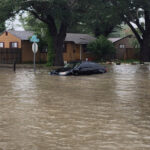
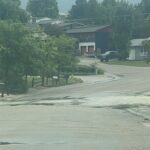 This has been one of those years, and I’m ready for the end of Spring. Our Winter was harsh, with lots of snow and this Spring has been full of thunderstorms and pouring rain…to the point of flash flooding and lots of warnings for lightning, hail, tornadoes, and floods. Those things aren’t all that unusual, with the possible exception of the floods, but the thing I really noticed was the cold temperatures. Normally as we approach the end of June, I am wearing shorts and t-shirts when I go out for my early morning walk. This year, however, I have been wearing pants and a jacket to keep me warm. Of course, by the time I am almost finished, I’m warm enough to go without a jacket…except for the clouds. Clouds just keep things cooler.
This has been one of those years, and I’m ready for the end of Spring. Our Winter was harsh, with lots of snow and this Spring has been full of thunderstorms and pouring rain…to the point of flash flooding and lots of warnings for lightning, hail, tornadoes, and floods. Those things aren’t all that unusual, with the possible exception of the floods, but the thing I really noticed was the cold temperatures. Normally as we approach the end of June, I am wearing shorts and t-shirts when I go out for my early morning walk. This year, however, I have been wearing pants and a jacket to keep me warm. Of course, by the time I am almost finished, I’m warm enough to go without a jacket…except for the clouds. Clouds just keep things cooler.
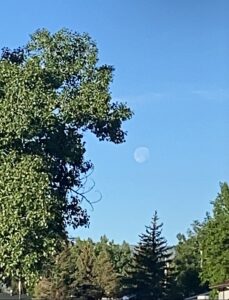
 As I was walking these past few mornings, I thought about just how much cooler it had been this Spring, and I hoped that as the Summer arrived, it would finally begin to warm up. I also thought about another Summer about 20 years ago or so. The Spring had been cold that year too, and Summer hadn’t improved much. In fact, it was the coldest Summer I had ever remembered. Infact, it was as if Summer never arrived that year. That makes for the feeling of a long cold Winter, even though there were some warm days. The good thing about the colder rainy weather, however, was that the grass, and several other things grew better that they had in years. I guess that’s a plus, but if you don’t mind, I’ll take the warmer weather, with the leaves on the trees and the deer by the trail. Those things make my whole day.
As I was walking these past few mornings, I thought about just how much cooler it had been this Spring, and I hoped that as the Summer arrived, it would finally begin to warm up. I also thought about another Summer about 20 years ago or so. The Spring had been cold that year too, and Summer hadn’t improved much. In fact, it was the coldest Summer I had ever remembered. Infact, it was as if Summer never arrived that year. That makes for the feeling of a long cold Winter, even though there were some warm days. The good thing about the colder rainy weather, however, was that the grass, and several other things grew better that they had in years. I guess that’s a plus, but if you don’t mind, I’ll take the warmer weather, with the leaves on the trees and the deer by the trail. Those things make my whole day.

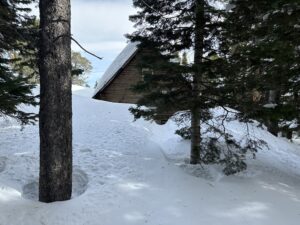 My sister-in-law, Jennifer Parmely’s partner, Brian Cratty is a mountain man…seriously. He loves being on Casper Mountain, Spring, Summer, Fall, and Winter. In the Summer, Brian hikes and mountain bikes for much of the day. He is totally in his element when he is on the mountain. Brian and Jennifer own a cabin on the mountain, and Brian, who is retired, spends as much time as possible there. I’m sure Jennifer will spend more time there as well, now that she has retired too.
My sister-in-law, Jennifer Parmely’s partner, Brian Cratty is a mountain man…seriously. He loves being on Casper Mountain, Spring, Summer, Fall, and Winter. In the Summer, Brian hikes and mountain bikes for much of the day. He is totally in his element when he is on the mountain. Brian and Jennifer own a cabin on the mountain, and Brian, who is retired, spends as much time as possible there. I’m sure Jennifer will spend more time there as well, now that she has retired too.
Even in the Winter, Brian spends most days at the cabin. When he gets there, he builds a fire in the cabin and then gets to work keeping it shoveled out. The deep accumulations of snow can do so much damage to a cabin that is not kept dug out. A structure can only hold so much snow before damage becomes inevitable. Normally there is a good amount of snow on the mountain, but this winter has been a real challenge. Nevertheless, Brian as worked hard, persevered, and kept it at bay, protecting the cabin. I think we have all been shocked ah the amount of snow on the mountain, and this last 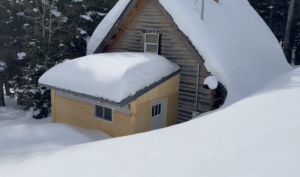
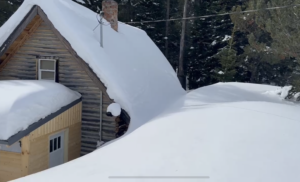 storm dumped an additional 48+ inches on the mountain. It looks to me like we might have as much as 10 feet in some places.
storm dumped an additional 48+ inches on the mountain. It looks to me like we might have as much as 10 feet in some places.
Driving to the cabin in the Winter is not possible, so they ski into the cabin in the Winter. Jennifer tells me that it only takes about 35 minutes from the Nordic lodge to get there. They love cross-country skiing, so for them it’s not a burden, but rather an adventure. The mountain might be teeming with activity in the Summer, but the Winter presents a very different atmosphere. There is a deep quiet a lot of the time, and that is part of its charm. Of course, the cabin is near trails too, and there might be snowmobilers around too, but not all the time, so the quiet is the bulk of the day.
Some days, Brian is just not able to get up to the mountain, so on those dreaded “stuck at home” days, Brian 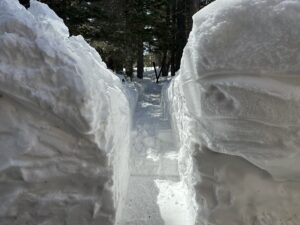
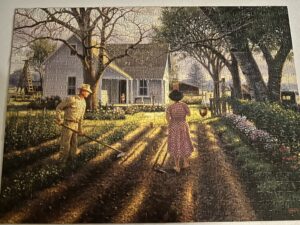 likes to work on puzzles. Not everyone has that patience to put puzzles together, but Brian really enjoys it. He also loves to cook, and that is always an advantage for Jennifer, who reaps the benefits of his skill, and he enjoys watching movies, although he probably finds it hard to sit there when he would rather be on the mountain shoveling snow!! Today is Brian’s birthday. Happy birthday Brian!! Have a great day!! We love you!!
likes to work on puzzles. Not everyone has that patience to put puzzles together, but Brian really enjoys it. He also loves to cook, and that is always an advantage for Jennifer, who reaps the benefits of his skill, and he enjoys watching movies, although he probably finds it hard to sit there when he would rather be on the mountain shoveling snow!! Today is Brian’s birthday. Happy birthday Brian!! Have a great day!! We love you!!

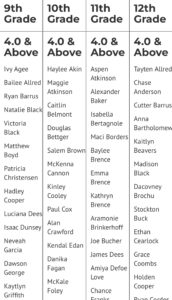 My niece, Kaytlyn Griffith is in middle school now and she has done an amazing job with her grades. Her mom, Susan Griffith tells me that her grades are definitely better than Susan and Kaytlyn’s dad, Josh Griffith ever did. When the honor roll was released the last time a couple months ago Kaytlyn was on it with a 4.0 grade point average. Per parents were so proud, and she truly is an inspiration to them.
My niece, Kaytlyn Griffith is in middle school now and she has done an amazing job with her grades. Her mom, Susan Griffith tells me that her grades are definitely better than Susan and Kaytlyn’s dad, Josh Griffith ever did. When the honor roll was released the last time a couple months ago Kaytlyn was on it with a 4.0 grade point average. Per parents were so proud, and she truly is an inspiration to them.
Because they live in the country, and her parents work, Kaytlyn qualifies for a restricted driver’s license. Kaytlyn is so mature and smart, that even though she barely studied for the written test, she got a 100% on it!! She is very smart. Once a driver passes the written test, they have 30 days to take the driving test. Unfortunately, when Josh went to take Kaytlyn for the driving test, they were told that she had to have an appointment, which we didn’t know before, because it never was that way in years gone by. Anyway, they had to reschedule the test. They couldn’t get an appointment until the 30 day…talk about cutting it close. They were all quite stressed. If she didn’t pass, she wouldn’t be able to try again another year.
Then, they found out that the test in was in Cody, rather than Lovell because that was the only option. Well, that added another stress factor because the traffic in Cody is very different than the traffic in Lovell. So, they spent the Thanksgiving holiday break making trips to Cody, so she could practice there for 2 to 3 hours a day.
To make matters worse, it snowed quite a lot on the day of the test. Nevertheless, they had to go or Kaytlyn would have to wait for another year. Then, the lady asked if she wanted to reschedule, to which Kaytlyn answered, “Absolutely not!!” Kaytlyn took the test driving her mom’s Tahoe which had 4-wheel drive, thankfully with an inch of snow on the ground. Kaytlyn did amazing. She didn’t slide at all in the intersections…pretty good for a 14-year-old girl!! It helped that she got to drive slower because of the snow. In the end, the snow, which they thought was a negative factor, ended up helping her a lot. Kaytlyn passed!! Her parents were quote proud and relieved. She only did one thing wrong during the test. Not bad for a young, first-time driver.
Her parents were so proud of her, and her dad fixed up a little car for her. The front end had been wrecked, but 
 Josh had some new parts for it. Because it was two different colors, Josh, who is pretty innovative, made the color change a little more interesting by putting flames between the colors. It fits perfectly with Kaytlyn’s sense of humor.
Josh had some new parts for it. Because it was two different colors, Josh, who is pretty innovative, made the color change a little more interesting by putting flames between the colors. It fits perfectly with Kaytlyn’s sense of humor.
Kaytlyn has grown up so fast. As her mom was looking through pictures from the past couple years, she was shocked at how much she had blossomed into a beautiful young lady. With her grades and everything else in her life, Kaytlyn has a bright future ahead of her. With her grades and everything else, her parents are beyond proud of her. They love her so much that words don’t cany begin to explain it. And we are all very proud of her too. Today is Kaytlyn’s 15th birthday. Happy birthday Kaytlyn!! Have a great day!! We love you!!

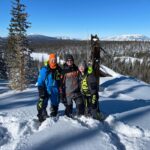 My nephew, Sean Mortenson is what you would most likely call an extreme sports fanatic. Sean loves pretty much any kind of sports, but he really shines when it comes to the extreme snow sports. Sean has absolutely no fear, and he will plunge his snow machine into the snow and come out with a smile on his face…almost a gleeful smile, for lack of a better word. Don’t get me wrong when I mention extreme sports, because Sean isn’t stupid about his stunts, just good!! Nevertheless, the things he does are extreme, and he has the videos to prove it.
My nephew, Sean Mortenson is what you would most likely call an extreme sports fanatic. Sean loves pretty much any kind of sports, but he really shines when it comes to the extreme snow sports. Sean has absolutely no fear, and he will plunge his snow machine into the snow and come out with a smile on his face…almost a gleeful smile, for lack of a better word. Don’t get me wrong when I mention extreme sports, because Sean isn’t stupid about his stunts, just good!! Nevertheless, the things he does are extreme, and he has the videos to prove it.
About a year ago, Sean opened his own business called Triangle Heating and Air LLC. Of course, it is an HVAC company, and it is doing quite well. In fact, they have been so busy that Sean had to hire help. He asked his father-in-law, Mike Reed, who had just retired. I’m sure you can imagine how that went. Hahaha!! 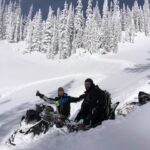
 Nevertheless, the business is thriving, and that is always a good thing, especially in these times, and especially when the business is just getting started. We are very happy for him in this new venture.
Nevertheless, the business is thriving, and that is always a good thing, especially in these times, and especially when the business is just getting started. We are very happy for him in this new venture.
Sean is about to embark on another new venture…or maybe experience. He and my niece, Amanda Reed are about to become empty nesters, as their daughter, Jadyn Mortensen heads off to college in the fall. She won’t be so very far away, since she is going to the University of Wyoming, but for this close family, it is a bittersweet time. They are happy for their daughter and excited for her future schooling, but it will most likely mean that things in their home will never be that same again, and that is the bitter part. Sean and Amanda have spent the last 19 years building a 
 beautiful life for them and their daughter, and they are very happy as a couple and as parents, so this change in their lives is a bit of a painful transition. Of course, it won’t be forever, but after several years of college, Jadyn will likely be ready to go out and start her own life, so in that way, it will likely never be the same. Still, it is time now for Sean and Amanda to begin a new chapter in their lives, and I know that this new chapter will be an exciting time, and it will be a rewarding time too. Today is Sean’s birthday. Happy birthday Sean!! Have a great day!! We love you!!
beautiful life for them and their daughter, and they are very happy as a couple and as parents, so this change in their lives is a bit of a painful transition. Of course, it won’t be forever, but after several years of college, Jadyn will likely be ready to go out and start her own life, so in that way, it will likely never be the same. Still, it is time now for Sean and Amanda to begin a new chapter in their lives, and I know that this new chapter will be an exciting time, and it will be a rewarding time too. Today is Sean’s birthday. Happy birthday Sean!! Have a great day!! We love you!!
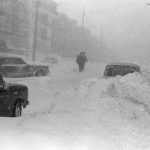
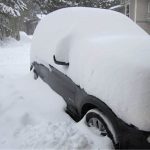 As the United States is in the grip of a fierce snow storm, I am reminded of another snow storm that happened February 21 – 23, 1971. The storm is considered Oklahoma’s extreme storm. This blizzard buried northwestern Oklahoma under as much as three feet of snow, and that doesn’t include the drifting. The town of Buffalo was the hardest hit. They reported 23 inches of snow on the 21st alone, and a state-record snow depth of 36 inches by the morning of the 24th. The northern part of the state was just buried.
As the United States is in the grip of a fierce snow storm, I am reminded of another snow storm that happened February 21 – 23, 1971. The storm is considered Oklahoma’s extreme storm. This blizzard buried northwestern Oklahoma under as much as three feet of snow, and that doesn’t include the drifting. The town of Buffalo was the hardest hit. They reported 23 inches of snow on the 21st alone, and a state-record snow depth of 36 inches by the morning of the 24th. The northern part of the state was just buried.
Oklahoma tends to be a mild weather state, with temperatures in December, January, and February averaging in the 50s. This week is the anniversary of the 1971 blizzard, which was likely the most intense winter storm ever to hit the Sooner State, although the current storm might rival it now. With the current storm, Oklahoma is seeing temperatures averaging -6°. The prior record was in 1909 at 7°. The power company had had to implement rolling blackouts to assure that the power grids don’t fail. I don’t think they have received the amount of snow with the current storm, but the severity is very similar, when you think about it. Anytime a storm is is bad enough to shut things down, especially the power, it is severe.
When the blizzard of 1971 finally ended, 36 inches of snow was measured in Buffalo, which was the state’s record for the highest snowfall total, but the snow drifts measured as high as 20 feet tall. While northwestern Oklahoma was hit very hard, just a short distance to the west in the Oklahoma Panhandle, only light snow fell with Boise City receiving only 3 inches and only 2 inches in Kenton. The 1971 storm put ranchers in a precarious position until C-124s from the Oklahoma Air National Guard dropped 150 tons of hay to stranded Oklahoma cattle. Local cattleman flew along with the aircraft to guide the aircrews to the stranded cattle. The massive loss numbers of 15,000 in livestock accounted for much of the $2 million in damages.
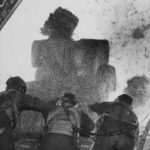
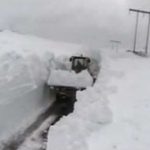 The vicious storm became known as the 84-hour blizzard. It actually occurred across the eastern half of the Texas and Oklahoma Panhandles. The storm his the worst un Oklahoma, but in the region, 8 deaths were reported…7 in Pampa, 1 in the Oklahoma Panhandle. The average drifts were 10 to 20 feet. Storms like these will not likely be soon forgotten, if they are ever forgotten. People are really never prepared for such cold temperatures and so much snow in the southern states. We can try to prepare, but when year after year goes by without such a sever storm, we soon become complacent, until the next one hits us, that is.
The vicious storm became known as the 84-hour blizzard. It actually occurred across the eastern half of the Texas and Oklahoma Panhandles. The storm his the worst un Oklahoma, but in the region, 8 deaths were reported…7 in Pampa, 1 in the Oklahoma Panhandle. The average drifts were 10 to 20 feet. Storms like these will not likely be soon forgotten, if they are ever forgotten. People are really never prepared for such cold temperatures and so much snow in the southern states. We can try to prepare, but when year after year goes by without such a sever storm, we soon become complacent, until the next one hits us, that is.
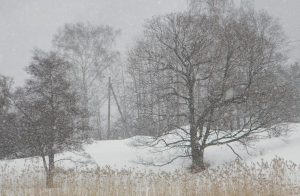 These days, the weather centers can predict storms weeks out. True, they aren’t always as accurate as we would like, but they can also predict corrections and update people with the changes. Of course, it is something we are used to in this day and age, but in 1941, weather centers didn’t exist. That was catastrophic for the people of North Dakota and Minnesota, when a fast-moving and quite severe blizzard hit on March 15th, killing 151 people. The storm came in so quickly that the people had no warning, and as a result far too many lost their lives.
These days, the weather centers can predict storms weeks out. True, they aren’t always as accurate as we would like, but they can also predict corrections and update people with the changes. Of course, it is something we are used to in this day and age, but in 1941, weather centers didn’t exist. That was catastrophic for the people of North Dakota and Minnesota, when a fast-moving and quite severe blizzard hit on March 15th, killing 151 people. The storm came in so quickly that the people had no warning, and as a result far too many lost their lives.
Because of that storm, weather forecasting and reporting systems made important advances that would have prevented the loss of life that occurred due to the sudden storm. The people of North Dakota and northern Minnesota had virtually no warning of the blizzard that was coming, until it swept in suddenly from the west on March 15. In some locations, temperatures dropped 20 degrees in less than 15 minutes. They were hit with 55 mile per hour sustained winds, and gusts reaching 85 miles per hour in Grand Forks and 75 miles per hour in Duluth. The winds 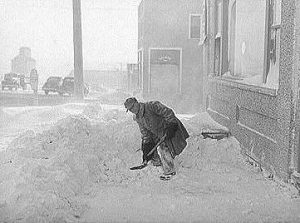 brought blinding snow and huge 7 foot high snow drifts across the states. Most of the victims of the blizzard were traveling in their cars when it hit. Highway 2, running from Duluth, Minnesota to North Dakota, was shut down, as were Highways 75 and 81. Attempts to rescue those stranded in their cars came too late. In one incident, six year old Wilbert Treichel died from exposure to the cold when his parents abandoned their car and attempted to carry him through the blizzard to safety.
brought blinding snow and huge 7 foot high snow drifts across the states. Most of the victims of the blizzard were traveling in their cars when it hit. Highway 2, running from Duluth, Minnesota to North Dakota, was shut down, as were Highways 75 and 81. Attempts to rescue those stranded in their cars came too late. In one incident, six year old Wilbert Treichel died from exposure to the cold when his parents abandoned their car and attempted to carry him through the blizzard to safety.
People attending a basketball game in Moorhead, Minnesota, were stranded at the arena overnight when it was wisely decided that travel was too dangerous for the 2,000 people. Theaters, hotels and stores across the region stayed open through the night to accommodate the many people had visited them, completely unaware that a major storm was approaching. Although the storm was also severe in Manitoba, Canada, only seven people there died because the population was much better prepared for the storm and for dangerous weather in general.
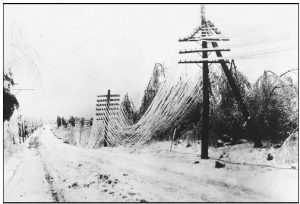
Prior to this time, meteorologists in Chicago were concerned mostly with local weather. It wasn’t that they did not care about the people in surrounding areas, but rather that it was not traditional reporting to report weather for the other areas. In the aftermath of this blizzard, weathermen in North Dakota and Minnesota, who had been under the control of the Chicago meteorology office, which simply paid less attention to events occurring to the north, were allowed autonomy in their reporting. Protected with new technological advances in the wake of the disaster, area residents hoped they would never again be so blind-sided by a winter storm.
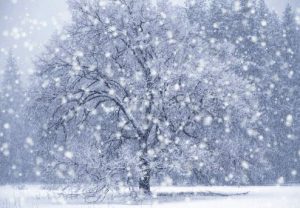 I’m not a huge fan of winter, but recently I saw something the mentioned how quiet it seems when it’s snowing, and I started thinking about the fact, that it really does seem quieter when it snows. I thought it must be some sort of illusion, or more likely, the lack of the Wyoming wind blowing, that made my world seem more quiet. Still, my curious mind had to find out exactly what the answer was. I’m not super into scientific experiments, but this seemed like a good one to check into. Maybe it was just me thinking about that, but maybe it wasn’t. Maybe other people wondered about it too.
I’m not a huge fan of winter, but recently I saw something the mentioned how quiet it seems when it’s snowing, and I started thinking about the fact, that it really does seem quieter when it snows. I thought it must be some sort of illusion, or more likely, the lack of the Wyoming wind blowing, that made my world seem more quiet. Still, my curious mind had to find out exactly what the answer was. I’m not super into scientific experiments, but this seemed like a good one to check into. Maybe it was just me thinking about that, but maybe it wasn’t. Maybe other people wondered about it too.
As it turns out, it wasn’t just me…and the world really is quieter when it snows. That isn’t something you really see when watching a blizzard on television, and maybe there are some exceptions to the rule, but the reality is that snow absorbs sound waves. When it’s snowing, there’s plenty of space between snowflakes, meaning that there is also less space for sound 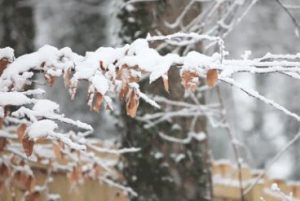 waves to bounce around…so I’m not imagining it. The world actually gets more quiet when it snows. Bernadette Woods Placky, a meteorologist and director of Climate Central’s Climate Matters program says, “When snow falls, it does absorb some of the sound waves.”
waves to bounce around…so I’m not imagining it. The world actually gets more quiet when it snows. Bernadette Woods Placky, a meteorologist and director of Climate Central’s Climate Matters program says, “When snow falls, it does absorb some of the sound waves.”
To further add to the quiet, as snowflakes stack up, there is more space left between them, compared to the surface of liquids like water. “With all that space, sound is unable to bounce off snow as easily as it would off water,” Woods Placky says. As a result, the sound gets absorbed, and somewhat like the way a soundproof room absorbs the sound, so you can’t hear what is going on inside, the snow pulls the sound into itself, and we don’t hear it very well. Of course, things like less people outside and on the road also account for the quiet. Traffic stalls tremendously during and after a snowstorm, due to icy roads and the dangers it presents to 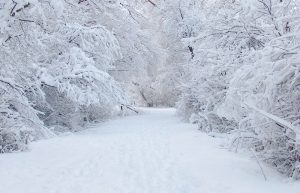 drivers. Many animals, especially birds, also aren’t out as much. They have to adapt to snowy weather that makes their environment colder and their food more difficult to find. They hunker down to conserve energy.
drivers. Many animals, especially birds, also aren’t out as much. They have to adapt to snowy weather that makes their environment colder and their food more difficult to find. They hunker down to conserve energy.
Whatever the reason for the quiet we hear during a snowstorm, I have always felt like it was a beautiful thing. I don’t like the cold, and I don’t like the icy roads, but just watching the snow, fall quietly to the ground, and listening to the quiet that it produces makes it would of those wonderful experiences that you have to slow down and take the time to notice, or you will never have the full peace that happens when the world gets quiet.
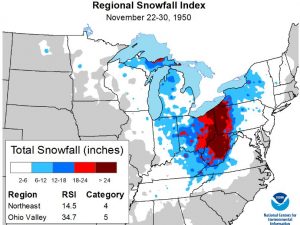
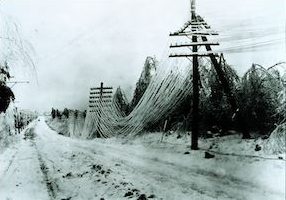 As winter arrived in Coburn Creek, West Virginia in 1950, a storm of epic proportions was about to set some serious records. From November 22 to 30, a slow-moving, powerful storm system dumped heavy snow across much of the central Appalachians. The storm would be remembered as as “The Great Appalachian Storm of 1950,” and it blanketed areas from western Pennsylvania southward deep into West Virginia with over 30 inches of snow. Several locations even received more than 50 inches of snow. Coburn Creek, West Virginia, reported the greatest snowfall total…a staggering 62 inches. Most towns can be shut own with 24 inches, so 62 inches was unthinkable. There is no way a car can get through that, in fact it will take hours to get a snowplow through it. For all intents and purposes, much of the Appalachian Mountains, and especially the Coburn Creek area were at a standstill.
As winter arrived in Coburn Creek, West Virginia in 1950, a storm of epic proportions was about to set some serious records. From November 22 to 30, a slow-moving, powerful storm system dumped heavy snow across much of the central Appalachians. The storm would be remembered as as “The Great Appalachian Storm of 1950,” and it blanketed areas from western Pennsylvania southward deep into West Virginia with over 30 inches of snow. Several locations even received more than 50 inches of snow. Coburn Creek, West Virginia, reported the greatest snowfall total…a staggering 62 inches. Most towns can be shut own with 24 inches, so 62 inches was unthinkable. There is no way a car can get through that, in fact it will take hours to get a snowplow through it. For all intents and purposes, much of the Appalachian Mountains, and especially the Coburn Creek area were at a standstill.
The cold front was massive, with frigid air stretching from the Northeast into the Ohio Valley and all the way down into the far Southeast. Temperatures fell to 22°F in Pensacola, Florida, 5°F in Birmingham, Alabama, 3°F in Atlanta, Georgia, and 1°F in Asheville, North Carolina. This record cold led to widespread crop damage, particularly in Georgia and South Carolina. In the north, intense winds associated with the storm caused extensive tree damage, power outages, and coastal flooding in New England. In New Hampshire, Mount Washington observed gusts as high as 160 mph. And, onshore winds along the coast caused extreme high tides and flooding in New Jersey and Connecticut. The storm was fairly short lived, and the temperatures quickly returned to normal in the first week of December 1950, bringing a whole new problem with them. The rise in temperatures led to a fast snowmelt, flooding several tributaries and major rivers. The Ohio River reached 28.5 feet, 4 feet above flood stage, in Pittsburgh. In Cincinnati, it reached 56 feet, also 4 feet above flood stage.
At the time, the Great Appalachian Storm of 1950 was one of the costliest storms on record, and it contributed to at least 160 deaths. Overall, on the Regional Snowfall Index (RSI) this powerful storm ranked as a Category 5…the worst category, for the Ohio Valley, and a Category 4 for the Northeast of the 212 storms our scientists have analyzed for the region. The RSI value of 34.7 securely locks its first place rank, well above the 24.6 RSI value second worst storm in March 1993. Only four Category 5 storms have impacted the Ohio Valley since 1900, so it is highly uncommon. During the storm, Pittsburgh, Pennsylvania, received 30.2 inches of snow, and both Erie, Pennsylvania, and Youngstown, Ohio, received more than 28 inches of snow. Across the region, over 18 inches of snow affected more than 6.1 million people. Such high snowfall totals affecting so many people largely contributed to the storm’s high ranking on the RSI scale.
In the Northeast region, the Great Appalachian Storm ranks as the ninth worst storm to impact the area out of the 203 analyzed. That fact seems surprising given the severity of the storm. I would have expected a much higher ranking. Over 30 inches of snow affecting 1.3 million people in the region largely contributed to the regional RSI value of 14.5. With that value, it ranks just behind the more recent February 2003, February 2010, and January 2016 storms. The late February snowstorm of 1969 remains the strongest storm to hit the 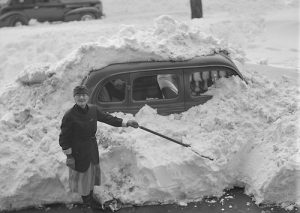
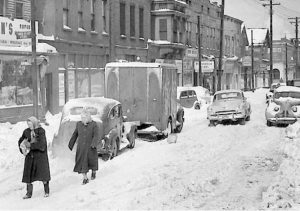 Northeast, with an RSI value of 34.0 making it a Category 5 or “Extreme” event. The March 1993 “Storm of the Century” remains the second strongest snowstorm to hit the Northeast, with an RSI value of 22.1 also making it a Category 5 event. As I look out my window at the light snow falling, I find myself feeling grateful that this storm is not expected to be anything like the Great Appalachian Storm of 1950.
Northeast, with an RSI value of 34.0 making it a Category 5 or “Extreme” event. The March 1993 “Storm of the Century” remains the second strongest snowstorm to hit the Northeast, with an RSI value of 22.1 also making it a Category 5 event. As I look out my window at the light snow falling, I find myself feeling grateful that this storm is not expected to be anything like the Great Appalachian Storm of 1950.
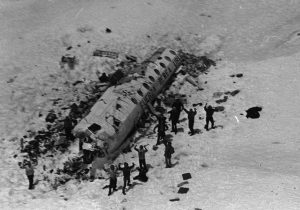 On October 13, 1972 a plane crashed somewhere in the Andes Mountains. That isn’t such an unusual event, but the crash was the last part of this event that was not unusual. Flight 571 was en route from Uruguay to Chili at the time it went down. The Uruguayan Air Force plane was chartered by the Old Christians Club to transport the team from Montevideo, Uruguay to Santiago, Chile. On October 12 the twin-engined Fairchild turboprop left Carrasco International Airport. The plane was carrying 5 crew members and 40 passengers. In addition to club members…friends, family, and others were also on board, having been recruited to help pay the cost of the plane. Because of poor weather in the mountains, they were forced to stay overnight in Mendoza, Argentina, before departing at about 2:18 pm the following day, October 13th. Although Santiago was located to the west of Mendoza, the Fairchild was not built to fly higher than approximately 22,500 feet. Because the Andes mountains were higher than that, the pilots plotted a course south to the Pass of Planchón, where the aircraft could safely clear the Andes mountains. An hour after takeoff, the pilot notified air controllers that he was flying over the pass, and shortly thereafter he radioed that he had reached Curicó, Chile, some 110 miles south of Santiago, and had turned north. However, the pilot had misjudged the location of the aircraft, which was still in the Andes mountains. Unaware of the mistake, the controllers cleared him to begin descending in preparation for landing. Then suddenly, the Chilean control tower was unable to contact the plane.
On October 13, 1972 a plane crashed somewhere in the Andes Mountains. That isn’t such an unusual event, but the crash was the last part of this event that was not unusual. Flight 571 was en route from Uruguay to Chili at the time it went down. The Uruguayan Air Force plane was chartered by the Old Christians Club to transport the team from Montevideo, Uruguay to Santiago, Chile. On October 12 the twin-engined Fairchild turboprop left Carrasco International Airport. The plane was carrying 5 crew members and 40 passengers. In addition to club members…friends, family, and others were also on board, having been recruited to help pay the cost of the plane. Because of poor weather in the mountains, they were forced to stay overnight in Mendoza, Argentina, before departing at about 2:18 pm the following day, October 13th. Although Santiago was located to the west of Mendoza, the Fairchild was not built to fly higher than approximately 22,500 feet. Because the Andes mountains were higher than that, the pilots plotted a course south to the Pass of Planchón, where the aircraft could safely clear the Andes mountains. An hour after takeoff, the pilot notified air controllers that he was flying over the pass, and shortly thereafter he radioed that he had reached Curicó, Chile, some 110 miles south of Santiago, and had turned north. However, the pilot had misjudged the location of the aircraft, which was still in the Andes mountains. Unaware of the mistake, the controllers cleared him to begin descending in preparation for landing. Then suddenly, the Chilean control tower was unable to contact the plane.
The pilot basically found himself caught with high mountains all around him…mountains that he could not climb over. When the plane tried to climb out the wings were clipped by the peaks, and the plane crashed in an unknown location. Because the Chilean control tower thought the plane was much further south, they weren’t even sure where to look. To make matters worse, the white plane was extremely difficult to see against the white snow. Search and rescue efforts from the sky were almost impossible…despite the survivors’ attempts to become noticeable. After 11 days, it was assumed that all of the 45 passengers and crew were dead, so search and rescue efforts ceased. The passengers had access to a radio, and when they heard the news of the search 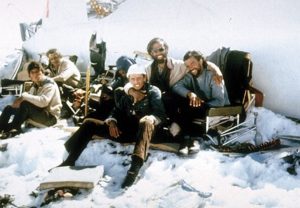 being called off, they were devastated. The crash killed 12 people instantly, leaving 33 survivors to try to stay alive until help could come. A number of the survivors were injured. At an altitude of approximately 11,500 feet, the group faced snow and freezing temperatures. There was no heat, and they only had each other to depend on. While the plane’s fuselage was largely intact, it provided limited protection from the freezing temperatures they faced. Food was scarce…mainly candy bars and wine. Even with rationing, those were gone in about a week. Now the survivors faced the most horrifying decision of their lives. Do they stay alive at all costs, including eating the bodies of the dead for food, or do they simply give up and starve to death? After a heated discussion, the starving survivors resorted to eating the corpses. Their survival instincts had kicked in, even though they knew they might be condemned by the world. Nevertheless, they would probably never forgive themselves anyway, so what the world decided made no real difference. Over the next few weeks six others died, and further disaster struck on October 29, when an avalanche buried the fuselage and filled part of it with snow, causing eight more deaths.
being called off, they were devastated. The crash killed 12 people instantly, leaving 33 survivors to try to stay alive until help could come. A number of the survivors were injured. At an altitude of approximately 11,500 feet, the group faced snow and freezing temperatures. There was no heat, and they only had each other to depend on. While the plane’s fuselage was largely intact, it provided limited protection from the freezing temperatures they faced. Food was scarce…mainly candy bars and wine. Even with rationing, those were gone in about a week. Now the survivors faced the most horrifying decision of their lives. Do they stay alive at all costs, including eating the bodies of the dead for food, or do they simply give up and starve to death? After a heated discussion, the starving survivors resorted to eating the corpses. Their survival instincts had kicked in, even though they knew they might be condemned by the world. Nevertheless, they would probably never forgive themselves anyway, so what the world decided made no real difference. Over the next few weeks six others died, and further disaster struck on October 29, when an avalanche buried the fuselage and filled part of it with snow, causing eight more deaths.
It was decided that someone would have to walk out and tell the officials that they were still alive. On December 12, with just 16 people still alive, three passengers set out for a 10 day journey to find help, though one later returned to the wreckage. After a difficult trek, the other two men finally came across three herdsmen in the village of Los Maitenes, Chile, on December 20. However, the Chileans were on the opposite side of a river, the noise of which made it hard to hear. The herdsmen indicated that they would return the following day. Early the next morning, the Chileans reappeared, and the two groups communicated by writing notes on paper that they then wrapped around a rock and threw across the water. The survivors’ initial note began, “I come from a plane that fell in the mountains.” The Chileans must have heard about the crash, and were most likely stunned to find that there were actually survivors. They hurried to notified authorities, and on December 22 two helicopters were sent to the wreckage. Six survivors were flown to safety, but bad weather delayed the eight others from being rescued until the next day. The 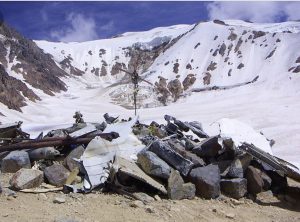 rescue was called the Miracle of the Andes. In the resulting media frenzy, the survivors revealed that they had been forced to commit cannibalism. Many people were outraged until one of the survivors claimed that they had been inspired by the Last Supper, in which Jesus gave his disciples bread and wine that he stated were his body and his blood. This helped soften public opinion, and the church later absolved the men. After watching the movie based on this event, I wondered how any of the rest of us would have handled that situation. We should never be too quick to judge people in such a situation, because we might find that given the same circumstances, we might do the exact same thing.
rescue was called the Miracle of the Andes. In the resulting media frenzy, the survivors revealed that they had been forced to commit cannibalism. Many people were outraged until one of the survivors claimed that they had been inspired by the Last Supper, in which Jesus gave his disciples bread and wine that he stated were his body and his blood. This helped soften public opinion, and the church later absolved the men. After watching the movie based on this event, I wondered how any of the rest of us would have handled that situation. We should never be too quick to judge people in such a situation, because we might find that given the same circumstances, we might do the exact same thing.

 After serving in the Navy for six years, my nephew, Allen Beach decided that it was time to move on to get the education that he wanted, which is hospital administration. He began his Navy career planning to become a pilot, but an injury forced him out of the program early on. He then decided to become a Corpsman, and found that he had a knack for that. His first duty station was in Bethesda, Maryland at Walter Reed Rational Military Medical Center, a term of service he was very proud of. While there, he was one of the EMTs who took care of the medical needs of the first family.
After serving in the Navy for six years, my nephew, Allen Beach decided that it was time to move on to get the education that he wanted, which is hospital administration. He began his Navy career planning to become a pilot, but an injury forced him out of the program early on. He then decided to become a Corpsman, and found that he had a knack for that. His first duty station was in Bethesda, Maryland at Walter Reed Rational Military Medical Center, a term of service he was very proud of. While there, he was one of the EMTs who took care of the medical needs of the first family.
After his term at Walter Reed Medical Center, Allen was stationed in Japan, which is where he met his future wife, Gabby, who was also a Corpsman stationed at the same base. Needless to say, Allen was very happy with his time in Japan, and meeting the love of his life. After that, Allen left the Navy, and for Gabby’s final year, they were stationed back at Walter Reed Medical Center. Now that both of them are out of the Navy, they have decided to move to Casper, Wyoming so that Gabby can continue her education too. Casper College has an excellent nursing program, and that is her chosen field. So, upon their release from the Navy, the headed west.
At this point, Allen and Gabby are living in an apartment on his mom and step-dad’s land outside of town. I’m sure that is quite a culture shock to them after the hustle and bustle of the Washington DC area. In addition,  they are getting used to the winters in Wyoming. Not that they never got snow in Japan or in Washington DC, but I don’t think they had the winds like we have here. One nice thing about the move was the ability to be closer to family. Allen and Gabby were able to spend Christmas week in Rawlins with the family there, and they all had a great time. They have really taken to country living, and other than the severe cold causing their pipes to freeze, life is good. Allen is still looking for a job, so once he gets a job they will be set, as his classes are online. We are very proud of all of his s accomplishments, and we know that the future will be bright for both of them. Today is Allen’s birthday. Happy birthday Allen!! Have a great day!! We love you!!
they are getting used to the winters in Wyoming. Not that they never got snow in Japan or in Washington DC, but I don’t think they had the winds like we have here. One nice thing about the move was the ability to be closer to family. Allen and Gabby were able to spend Christmas week in Rawlins with the family there, and they all had a great time. They have really taken to country living, and other than the severe cold causing their pipes to freeze, life is good. Allen is still looking for a job, so once he gets a job they will be set, as his classes are online. We are very proud of all of his s accomplishments, and we know that the future will be bright for both of them. Today is Allen’s birthday. Happy birthday Allen!! Have a great day!! We love you!!

